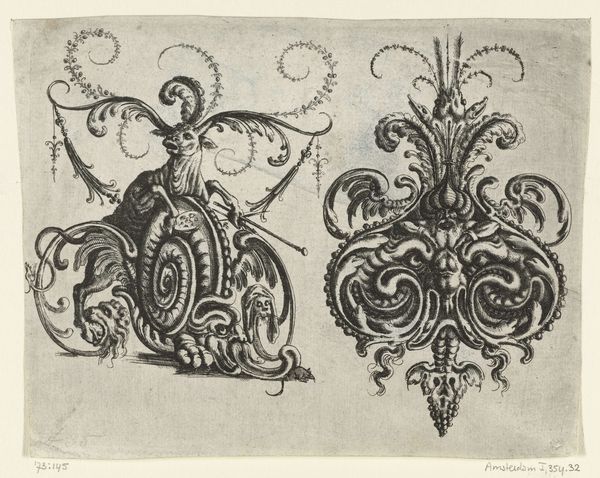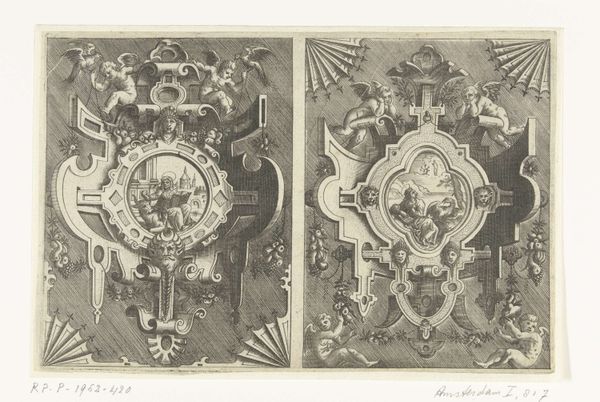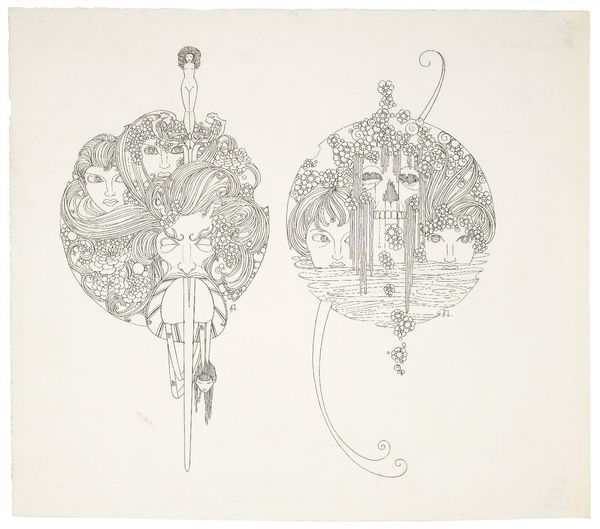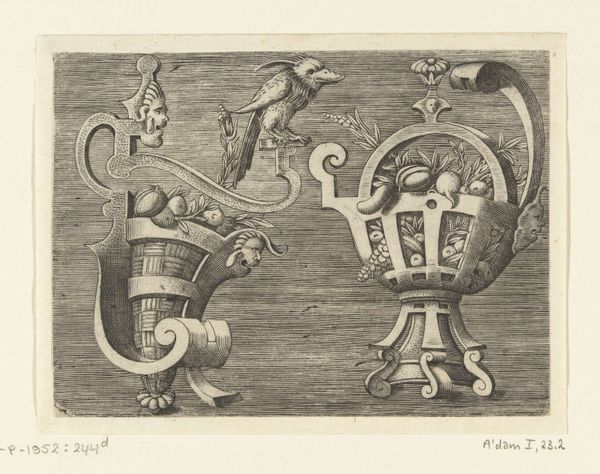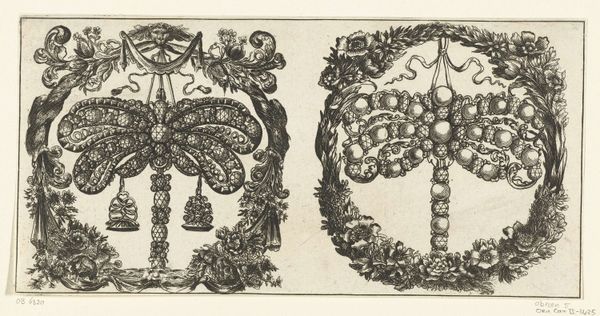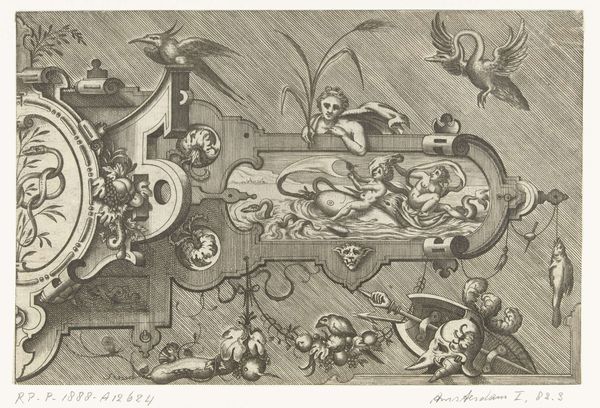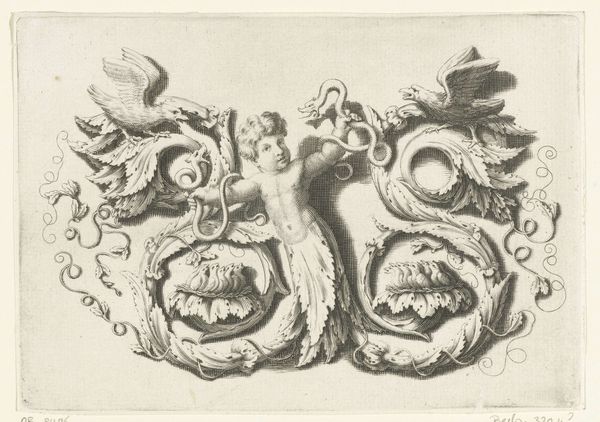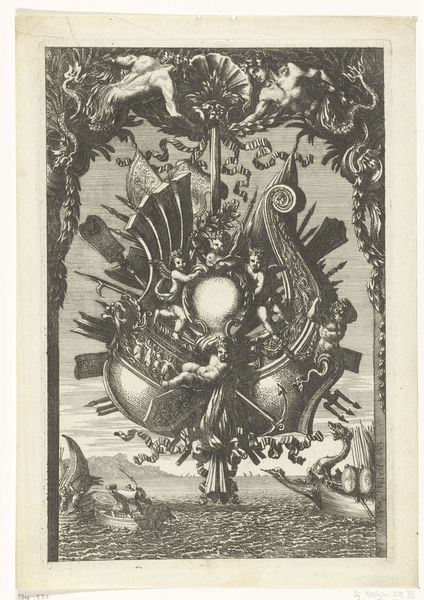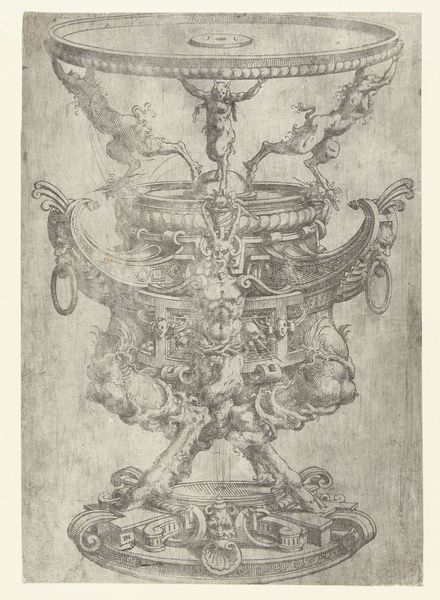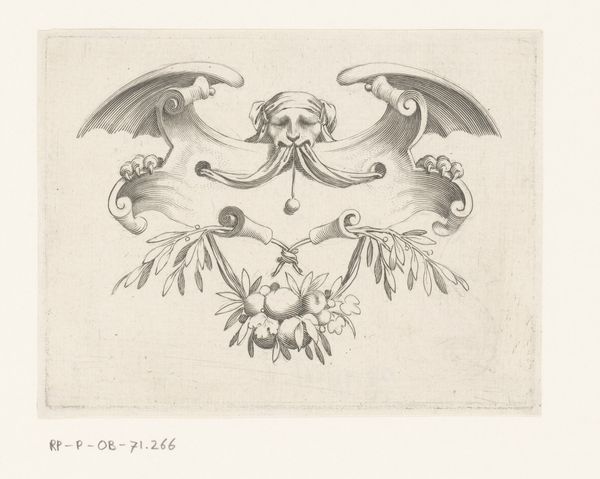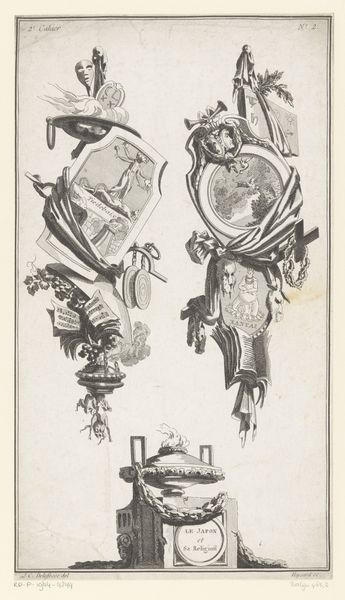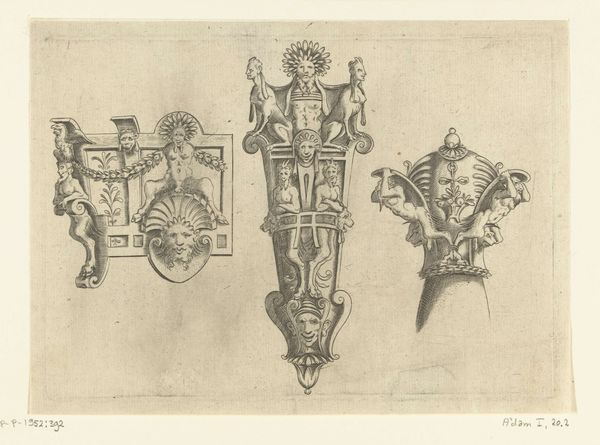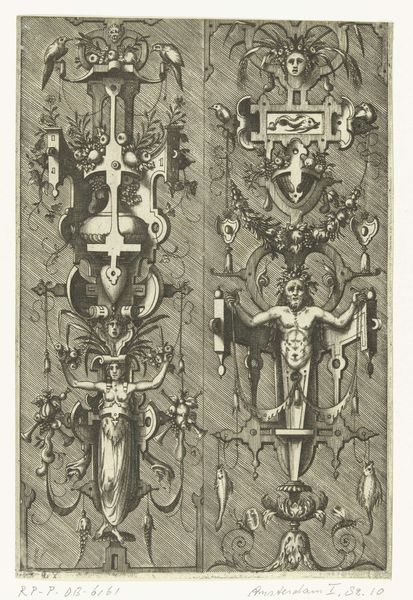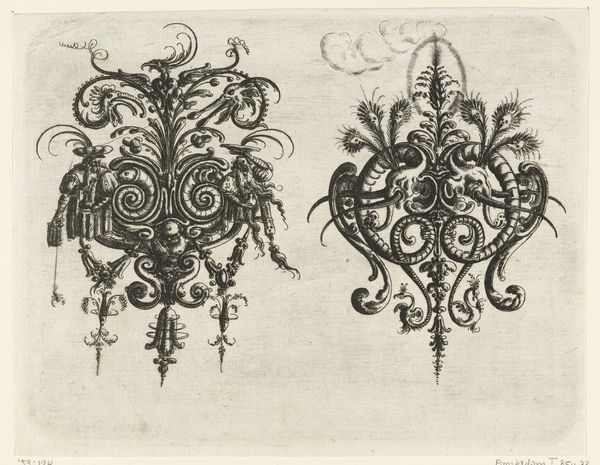
Twee vazen met vruchten en bloemen in een omlijsting van rolwerk 1567
0:00
0:00
print, engraving
#
allegory
# print
#
form
#
11_renaissance
#
line
#
northern-renaissance
#
decorative-art
#
engraving
Dimensions: height 137 mm, width 203 mm
Copyright: Rijks Museum: Open Domain
Curator: Today we're looking at a work by Pieter van der Heyden, created in 1567: "Two Vases with Fruit and Flowers in an Ornamental Border". It’s an engraving currently held in the Rijksmuseum. Editor: Whoa, busy! My first thought is, it looks like something you’d find carved into a gothic chair, maybe with a few skulls thrown in for good measure. Dense. Curator: That dense quality you're reacting to speaks to its function, really. These ornamental prints were crucial. They provided patterns for artisans. We’re talking goldsmiths, woodcarvers, all needing design inspiration. The Northern Renaissance, you see, experienced a boom in decorative art. Editor: Right. So it's not necessarily made to be gazed at itself, but to spark *other* creations? I dig that. It’s like a design prompt, overflowing with possibilities. I am getting some playful, dark vibes from these cheeky faces. Are those dead fish dangling beneath the vase on the left? Curator: Indeed. Consider that van der Heyden pulls from the allegorical tradition; things aren't simply what they appear. While fruits and flowers speak to abundance and earthly delights, other motifs can signal darker realities of ephemeral life, especially within the frame of religious morality that pervaded the Netherlands during the rise of the Dutch Reformation. The juxtaposition suggests contemplation beyond mere surface appeal. Editor: A little memento mori mixed in with the pretty fruit. That totally checks. And, like you were saying, because it was intended for other artists, there's this looseness, almost an invitation to improvise with his source material. It breathes despite the intricacy. Curator: Precisely. By understanding the historical context of these prints as more than mere aesthetic objects, we get insight into 16th-century artisan culture and also broader questions surrounding religious change. The emphasis on surface detail also reflects a growing mercantile economy where display, in various forms, was encouraged and celebrated. Editor: It's less a finished product and more a set of blueprints for a party of ideas. And knowing all of that, knowing what it *did*, enriches my viewing. Curator: Absolutely, seeing art as entangled in historical, cultural and religious dimensions provides nuanced understandings of the past. Editor: Yeah, my initial "gothic chair" take feels kinda flat now. Time to go rethink everything I know! Thanks for the insight!
Comments
No comments
Be the first to comment and join the conversation on the ultimate creative platform.
